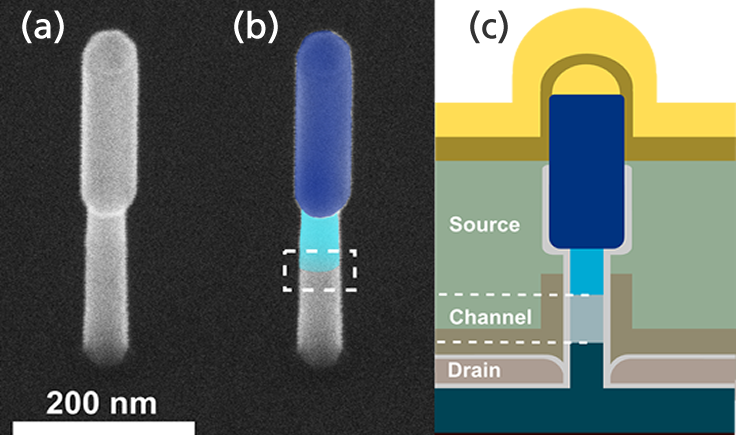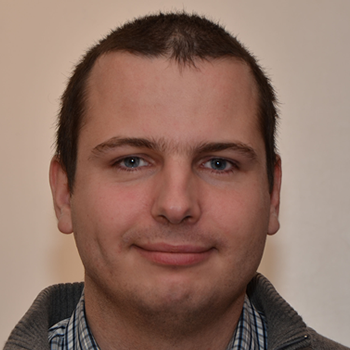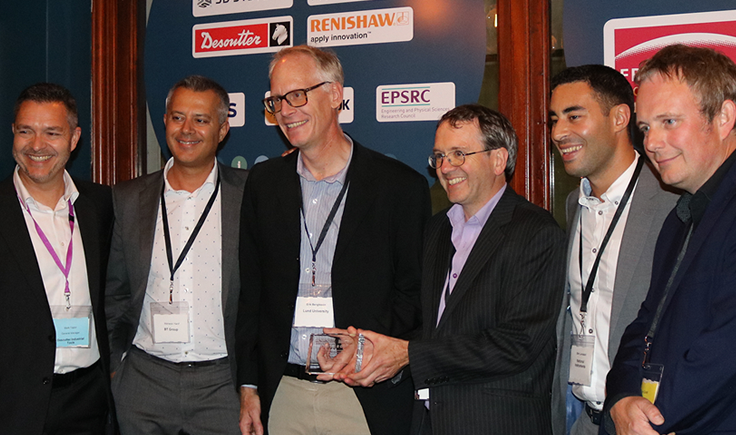Nyhetsarkiv, 2017
Liang Liu received Göran Linds Prize from the Royal Physiographic Society of Lund
Publicerad: 2017-12-08
Liang Liu, departement of electrical and information technology, LTH at Lund university, have received Göran Linds Prize (40.000 SEK) from the Royal Physiographic Society of Lund.
About the Royal Physiographic Society of Lund:...
Liang Liu, departement of electrical and information technology, LTH at Lund university, have received Göran Linds Prize (40.000 SEK) from the Royal Physiographic Society of Lund.
About the Royal Physiographic Society of Lund: https://www.fysiografen.se/en/
Länk till artikeln Liang Liu received Göran Linds Prize from the Royal Physiographic Society of Lund
Pietro Andreani elevated to IEEE Fellow
Publicerad: 2017-12-08
Pietro Andreani, departement of electrical and information technology, LTH at Lund university, has been elevated to IEEE Fellow for his contributions to CMOS integrated voltage-controlled oscillators.
About the IEEE Fellow Program:... Pietro Andreani, departement of electrical and information technology, LTH at Lund university, has been elevated to IEEE Fellow for his contributions to CMOS integrated voltage-controlled oscillators.
About the IEEE Fellow Program: https://www.ieee.org/membership_services/membership/fellows/index.html
Pietro Andreani, departement of electrical and information technology, LTH at Lund university, has been elevated to IEEE Fellow for his contributions to CMOS integrated voltage-controlled oscillators.
About the IEEE Fellow Program: https://www.ieee.org/membership_services/membership/fellows/index.html
Länk till artikeln Pietro Andreani elevated to IEEE Fellow
Wireline communications in a wireless world
Publicerad: 2017-11-21
It is possible to get a fiber-like Internet speed without bothering about pulling a fiber home. Ultra-fast Internet speeds are coming through the regular copper based phone lines. The latest technology behind this buzz is G.fast. The main idea of...
? I like signal processing and felt that I had learned a lot by working with Thomas Magesacher, who supervised my Master?s thesis. So when he introduced a PhD position on the topic to me I thought, why not, says Yezi Huang.
? The interesting part of doing copper line communication is that it is a small community. Shortly after the position started, I got acquainted with most of the European-based industrial and academic people in this area. Directly from them, I kept learning very relevant problems and interesting topics, she continues.
Yezi Huang comes from the city Yibin, where the Yangtze river starts, in the Sichuan Province of China, ? also a place famous for spicy food.
? I did my Master?s degree also at LTH, Lund university at the Department of Electrical and Information Technology. After I decided to continue my studies in Sweden, Lund University was on the top of my list, for its historical environment and giving good education in telecommunication, Yezi Huang continues.
The special setting of this PhD position placed Yezi Huang in Stockholm to have a close cooperation with the industrial partners of the project.
? It was an excellent advantage. But the negative side was the frequent travelling to Lund to take courses and perform department duties. One can count how many trips would the 90 credits and hundreds of teaching hours equal to. Leaving home at 5:00 am during the Swedish winter time was not pleasant. Cold sandwiches at Malmö airport after a full working day were not enjoyable either. But now when I sit warmly indoor and start recalling the four and half years? experience, I feel proud that I made it, she says.
? It was a natural move for me, and I continued with the work that was presented in the last piece of the thesis. Recently, a new project starts which is more related to the upper layers, quite a challenge for me. I did wireless communication during my Master?s degree, and then wireline communication with my PhD. But both are in physical layer. It seems that my telecommunication background will be enriched again with the new assignment, Yezi Huang concludes.
Länk till artikeln Wireline communications in a wireless world
Andreas Develops Functional Structures for Controlling the Properties of Electromagnetic Waves
Publicerad: 2017-11-03
Electromagnetic waves play a key role in the communication networks that today encompass the whole world. These waves interact with obstacles in several different ways. For example are waves generated, redirected and absorbed when illuminating...
? In my thesis, functional structures for electromagnetic waves have been design and characterised, both numerically and experimentally, for different applications. An example of such structures designed in the thesis are: circular polarisation selective structures for satellite communication applications. These structures are used to increase the data throughput of future satellite communication systems. Potentially this results in faster internet in our cell phones. Another example of such structures that I?ve studied are electromagnetic absorbers for radar cross section reduction in aeronautics applications, Andreas Ericson explains.
How come you pursued a PhD?
During his bachelor studies Andreas stumbled upon Gerhard Kristenssons course in Electromagnetic Theory, and this was the start of his career in the field.
? I was instantly fascinated by electromagnetic phenomena and especially electromagnetic waves. During my Masters, I studied all courses I could find relating to these waves, given by Mats Gustafsson, Daniel Sjöberg, Anders Karlsson and Richard Lundin. After that, I wanted to learn more and realised that a PhD with the Electromagnetic Theory group at EIT was a great way to do this.
Why LTH?
? I was born in Linköping, Sweden, and during my younger years I spent most of my time playing ice hockey. After I graduated high school I decided to move south to Lund to experience the world-renowned education at LTH, as well as the night life of the famous ?student nations?. My first day in Lund, at the Engineering Physics program, I met my wife Malin and at that day I became rooted in Skåne, Andreas continuous.
How did you deal with not playing Ice hockey in Lund?
? I have always loved sports in general, and this interest I have kept alive during my time at EIT. Every week, I have had the pleasure of playing floor ball with some colleagues, including my supervisor who also happens to be the head of my department.
What are your plans now?
? I am starting a new position in January at a company called TICRA, located in central Copenhagen. They specialise in developing software for design and simulation of space antennas and satellite communication systems. At this company, I will continue working with the technology that was the focus of my research during my PhD, Andreas concludes.
The thesis: Design and Characterization of Functional Structures for Electromagnetic Waves is available at http://portal.research.lu.se/portal/en/publications/design-and-characterization-of-functional-structures-for-electromagnetic-waves(0a2f5392-8b27-48f6-976d-39df2134e6e2).html
Länk till artikeln Andreas Develops Functional Structures for Controlling the Properties of Electromagnetic Waves
Nicolae Paladi´s Thesis Helps Build Trust in Cloud Computing
Publicerad: 2017-10-23
Computers are essential to running the services we use daily. Increasingly, we do not need to own a computer; computing is done on centralised computing platforms ? known as clouds ? operated by cloud service providers. While clouds collect, store...
Every day, increasingly more IT infrastructure is migrated to centralised processing, commonly called ?cloud computing?. This includes diverse systems we all use ? from email and on-line laundry booking to medical health records and enterprise systems used by banks and governmental agencies. The increase in the size, complexity and evolution rate of the systems supporting them in the ?cloud computing? paradigm is growing out of the scope of the traditional information security audit frameworks that are central to help maintaining the trust of users in the cloud computing paradigm. This calls for novel mechanisms to both verify the integrity of cloud computing infrastructure and maintain control over core assets.
? In my research, I used widely available hardware security components to develop mechanisms allowing to verify the integrity of software components in the cloud infrastructure. The mechanisms described in my thesis aim to enable integrity verification remotely and on-demand. They are potentially useful both to the cloud service providers themselves, as well as to large cloud tenants, says Nicolae Paladi who recently presented his PhD thesis at department of Electrical and Information Technology at LTH, Lund university.
? When it comes to my subject, what I find fascinating is the role of computer security in building trust and enabling innovations. For example, protocols for secure communication on the Internet were essential for enabling innovations like e-commerce, various on-line services for complex interactions with public authorities, and even on-line voting in some countries, while cryptographic primitives such as hash functions found an application in electronic cash. Since computing and data is increasingly moving into the cloud, building mechanisms to enable trust in the security of cloud systems has the potential to enable further innovations to improve people?s daily lives.

Cloud architecture fragment focused on protecting the security of computation and network communication in cloud platforms.
Who is Nicolae Paladi?
? I am from the Republic of Moldova; having worked for several years at an on-line payments a fintech startup in Stockholm, I joined RISE SICS (previously the Swedish Institute of Computer Science) to write my master thesis in information security. My supervisor, Christian Gehrmann, convinced me to continue at RISE SICS and later helped me enroll to LTH as an industrial PhD student.
? I like being outdoors regardless of the weather, and in my free time I tend to go on long hikes, kayaking or cross-country skiing ? ideally to remote areas. When I am not outdoors I like to organize documentary film screenings with my friends.
Anything you want to share from your PhD time?
?? There were plenty of exciting and funny occasions! As a PhD student, I presented my work at many events, something that even involved travelling to conferences at remote destinations, such as Greenland and Japan. Besides breathtaking views of the Ilulissat Icefjord, in Greenland I experienced the shortest commercial flight so far ? less than 15 minutes, between Ilulissat and Aasiaat.
? Before travelling to Japan I was happy to learn that I did not need a visa to enter the country. However, at the border control in Osaka airport the border control officer took me to a separate room and very politely explained that I could not enter the country without a visa, since my passport was not biometric. I explained that I was a PhD student going to a conference, but he seemed remained unconvinced. As a last resort, I handed him a hard copy of my article, which I discovered by chance in my backpack. After he thoroughly examined the article and offered me a bunch of papers to fill in, I was given a visa and could finally continue to Kyoto where the conference was starting the next day. I learned that I must always carefully read the fine print and notes about travel regulations ? and that nothing beats having a paper printed copy of the research article.
What are your plans?
? I will continue creating tools that build trust in distributed environments and allow users to better control their information. We live in an increasingly interconnected world and where data is in the long run the most valuable commodity ? so it is paramount to manage it well, PhD Nicolae Paladi concludes.
The PhD Thesis is available at: http://portal.research.lu.se/portal/en/publications/trust-but-verify(22c1d979-2d87-4099-b19c-ea140cd76663).html
Länk till artikeln Nicolae Paladi´s Thesis Helps Build Trust in Cloud Computing
Gyllene pekpinnen 2017 till Linus Karlsson vid institutionen för Elektro- och Informationsteknik
Publicerad: 2017-10-03
I år gick de pedagogiska priset ?Den gyllene pekpinnen?* till Linus Karlsson vid institutionen för Elektro- och Informationsteknik.
Motivering: I år har vi valt att ge priset till Linus Karlsson framförallt för hans arbete i kursen Datasäkerhet. Där har han utmärkt sig för studenterna genom välgjorda labbar som uppdaterats mitt i kursen för att inkludera nytt material från forskning. Han har även haft en smittsam glädje som både labbhandledare och föreläsare och därför blir ihågkommen hos många studenter som den som alltid har tid med studenter som har frågor och problem. Hans bidrag har lett till att många studenter lämnar kursen med goda minnen och ett förnyat intresse för ämnet.
Det som för oss har gjort Linus engagemang extra imponerande är att han har gjort detta utan att ha explicit ansvar för kursen. Han driver på utvecklingen och kvaliteten på våra kurser i egenskap av doktorand och har även fortsatt att göra så i höstens omgång av kursen Digitalteknik där han har gjort videos som täcker de mer komplicerade områdena. Så att även årets tvåor tackar honom för hans jobb.
Årets och tidigare års pristagare: https://www.dsek.se/sektionen/srd/goldenrod.php
* Gyllene pekpinnen är Datatekniksektionens vandringspris som delas ut till en anställd vid LTH som har presterat utöver det vanliga för studenterna. Mottagare av priset väljs av Datatekniksektionens studieråd och delas högtidligen ut vid Nollegasquen.
Länk till artikeln Gyllene pekpinnen 2017 till Linus Karlsson vid institutionen för Elektro- och Informationsteknik
Elvedin Memisevics avhandling utmanar traditionella transistorer med tunneltransistorer av vertikala nanotrådar
Publicerad: 2017-09-22
Traditionella transistorer är platta, tillverkade av halvledarmaterialet kisel och blir mycket varma. Dessutom kan de inte göras mycket mindre utan att kortslutas – en viktig förklaring till att Moores lag om kontinuerligt ökande prestanda ser vägs ände. Doktorsavhandlingen som Elvedin Memisevic lade fram den 14 september 2017 utmanar de traditionella transistorerna på flera fronter. I korthet går strategin ut på att ersätta kiseln med andra halvledarmaterial som har bättre ledningsegenskaper. Dessa material framställs i form av vertikala nanotrådar, vilket innebär att transistorerna är tredimensionella.
|
Materialen som ersätter kisel leder till att man kan använda lägre drivspänningar vilket minskar temperaturen, men också att man kan få snabbare omslag mellan på och av, eller ettor och nollor. Nedskalningen i sig ökar dessutom hastigheten eftersom avstånden blir mindre. Begreppet för dagen är tunneltransistorer. – Arbetet har pågått länge, men nu kan vi för första gången någonsin tillverka tunneltransistorer med en prestanda som kan jämföras med den hos dagens traditionella transistorer, kommenterar Dr. Elvedin Memisevic. Det är ett viktigt steg för att tunneltransistorn ska gå från att vara den lovande kandidaten till den trovärdiga ersättaren, kommenterar, Elvedin Memisevic, Varför kallas det för tunneltransistorer? Elvedin föddes i dagens Bosnien och Hercegovina och kom till Sverige som 9-åring 1992. Utbildningsbakgrunden ligger inom civilingenjörsproprammet Teknisk nanovetenskap på LTH, Lunds universitet, som avslutades med ett examensarbete inom nanoelektronikgruppen på EIT vid LTH. – Jag lärde mig väldigt mycket av examensarbetet. Men jag insåg också att det fanns mycket mer jag inte kunde så det enda alternativet var att fortsätta vidare. Det som jag tycker är mest fascinerande med min forskning är att transistorerna som jag jobbar med kombinerar flera intressanta teknologier, säger Elvedin. Kan du nämna höjdpunkt under doktorandutbildningen? Läs om arbetet på: http://www.lu.se/article/tre-ganger-mer-energisnalt-och-battre-prestanda Vad har du för planer för framtiden? |
(a) En bild på en vertikal nanotråd tagen med svepelekronmikroskop. (b) Samman bild som i figur (a) fast nu är de olika segmenten färgade. Varje segment består av inbördes olika halvledarmaterial. Den streckade kvadraten visar regionen där tunnlingen sker. (c) En schematisk bild av en färdig tunneltransistor.'
Dr. Elvedin Memisevic. Avhandlingen ”Vertical III-V Nanowire Tunnel Field-Effect Transistor” kan laddas ned från portal.research.lu.se. |
Elvedin Memisevics avhandling utmanar traditionella transistorer med tunneltransistorer av vertikala nanotrådar
Publicerad: 2017-09-20
Traditionella transistorer är platta, tillverkade av halvledarmaterialet kisel och blir mycket varma. Dessutom kan de inte göras mycket mindre utan att kortslutas ? en viktig förklaring till att Moores lag om kontinuerligt ökande prestanda ser vägs...
Materialen som ersätter kisel leder till att man kan använda lägre drivspänningar vilket minskar temperaturen, men också att man kan få snabbare omslag mellan på och av, eller ettor och nollor. Nedskalningen i sig ökar dessutom hastigheten eftersom avstånden blir mindre. Begreppet för dagen är tunneltransistorer. ? Arbetet har pågått länge, men nu kan vi för första gången någonsin tillverka tunneltransistorer med en prestanda som kan jämföras med den hos dagens traditionella transistorer, kommenterar Dr. Elvedin Memisevic. Det är ett viktigt steg för att tunneltransistorn ska gå från att vara den lovande kandidaten till den trovärdiga ersättaren, kommenterar, Elvedin Memisevic,
Varför kallas det för tunneltransistorer?? I tunneltransistorn används en kvantmekanisk effekt kallat kvantmekanisk tunnling. Eftersom det är ett kvantmekaniskt fenomen finns det tyvärr inte något intuitivt sätt att förstå den. Men just att den existerar tillåter oss att tillverka denna typ av transistorer. För en traditionell transistor är samma effekt av ondo eftersom det begränsar hur mycket de kan skalas ned, säger han. Elvedin föddes i dagens Bosnien och Hercegovina och kom till Sverige som 9-åring 1992.Utbildningsbakgrunden ligger inom civilingenjörsprogrammet Teknisk nanovetenskap på LTH, Lunds universitet, som avslutades med ett examensarbete inom nanoelektronikgruppen på EIT vid LTH.
? Jag lärde mig väldigt mycket av examensarbetet. Men jag insåg också att det fanns mycket mer jag inte kunde så det enda alternativet var att fortsätta vidare. Det som jag tycker är mest fascinerande med min forskning är att transistorerna som jag jobbar med kombinerar flera intressanta teknologier, säger Elvedin. Kan du nämna höjdpunkt under doktorandutbildningen?
? Jag skulle säga att det roligaste, men även det mest nervösa ögonblicket, var när jag och några kollegor åkte till konferensen International Electron Devices Meeting i San Francisco 2016. Konferensen är en av de största vi har i vårt fält. Det som presenteras där får mycket uppmärksamhet och i vårt fall valdes resultaten från Lund ut som en av höjdpunkterna för konferensen, kommenterar Elvedin. Läs om arbetet på: http://www.lu.se/article/tre-ganger-mer-energisnalt-och-battre-prestanda Vad har du för planer för framtiden?
? Som doktorand har jag lärt mig väldigt mycket, dock även nu ser jag att det är väldigt mycket jag inte kan. Forskningen som man bedriver som doktorand är väldigt specifik så mest naturliga steget är att försöka hitta sätt att bredda kompetensen. Det kan antingen vara att man går till en annan forskningsgrupp inom akademin eller söker sig till industrin. Vad det blir vet jag inte för tillfället, säger Dr Elvedin Memisevic. Text: Jonas Wisbrant
Länk till artikeln Elvedin Memisevics avhandling utmanar traditionella transistorer med tunneltransistorer av vertikala nanotrådar
EIT-researchers won the Collaborate to Innovate Awards 2017 for 5G test at British Telecom
Publicerad: 2017-09-08
September 6th, 2017 - the Communication Engineering group at department of EIT, Lund University together with research groups at University of Bristol, National Instruments, and British Telecom, were announced the winners in the category...
- We are very happy to see how such an extraordinary joint effort has materialised so that we now jointly can demonstrate and investigate systems that people were unsure of whether they at all could be implemented a few years ago, says Fredrik Tufvesson, Professor of Radio Systems at Lund University.
Read more at:
https://www.theengineer.co.uk/c2i-2017-winners-announced/
Länk till artikeln EIT-researchers won the Collaborate to Innovate Awards 2017 for 5G test at British Telecom
EIT-researchers with partners won the Collaborate to Innovate Awards 2017 for 5G test at British Telecom
Publicerad: 2017-09-07
|
September 6th, 2017 - the Communication Engineering group at department of EIT, Lund University together with research groups at University of Bristol, National Instruments, and British Telecom, were announced the winners in the category ‘Information, Data & Connectivity’ at The Engineer: Collaborate to Innovate (C2I) Awards 2017, with their project ‘Setting World Records in 5G Wireless Spectral Efficiency using Massive Multiple Input, Multiple Output (MIMO)’. - We are very happy to see how such an extraordinary joint effort has materialised so that we now jointly can demonstrate and investigate systems that people were unsure of whether they at all could be implemented a few years ago, says Fredrik Tufvesson, Professor of Radio Systems at Lund University. Read more at: |
From left: Mark Taylor (General Manager at Desoutter Industrial Tool), Mansoor Hanif (British Telecom), Erik Bengtsson (Lund University), Mark Beach (University of Bristol),Ben Lavasani (NI), Jon Excell: Editor - The Engineer |
Two days of System Design on Silicon at Lund University
Publicerad: 2017-09-05
|
On September 5-6 over 130 participants from more than 30 different organizations gathers at Lund University to discuss system design on silicon at the annual Circuit Design workshop. The program mix invited presentations addressing a wide range of circuit-design related topics with project highlights from the ongoing research at the VINNOVA Excellence Center for System design On Silicon (SoS) at Lund University. – It is our hope that the workshop will not only deliver interesting technical insights, but also help create new connections and collaborations between participating individuals and organizations, says professor Ove Edfors, workshop organiser. The full program is available at: http://cdworkshop.eit.lth.se/fileadmin/eit/group/71/2017/SoS-WS-2017-programfolder-A5.pdf Text & illutstration: Jonas Wisbrant |
... |
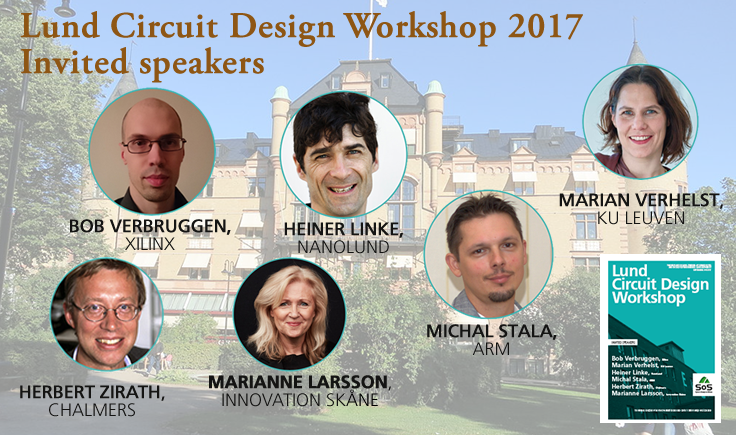 |
Two days of System Design on Silicon at Lund University
Publicerad: 2017-09-04
On September 5-6 over 130 participants from more than 30 different organizations gathers at Lund University to discuss system design on silicon at the annual Circuit Design workshop. The program mix invited presentations addressing a wide range of...
On September 5-6 over 130 participants from more than 30 different organizations gathers at Lund University to discuss system design on silicon at the annual Circuit Design workshop. The program mix invited presentations addressing a wide range of circuit-design related topics with project highlights from the ongoing research at the VINNOVA Excellence Center for System design On Silicon (SoS) at Lund University. ? It is our hope that the workshop will not only deliver interesting technical insights, but also help create new connections and collaborations between participating individuals and organizations, says professor Ove Edfors, workshop organiser. The full program is available at: http://cdworkshop.eit.lth.se/fileadmin/eit/group/71/2017/SoS-WS-2017-programfolder-A5.pdf Read more |
Länk till artikeln Two days of System Design on Silicon at Lund University
Babak will continue to lower the power
Publicerad: 2017-06-21
Babak Mohammadi responding
Text: Anders Borgström, Photo: Yunus Ökmen
Attacking power dissipation
-I’ve been mostly focused on the transistor- and gate level but also touched on the module- and architecture level during my research, says Babak. More functionality, higher performance and millions of transistors also means higher power dissipation in modern integrated circuits.
EITs fresh doctor, Babak Mohammadi, kept a strict focus during his PhD-studies on attacking this problem from transistor to architectural levels. His work helps to counteract the accelerating global power demand we see as a result of the increased IoT and digitalization rollouts all over the world.
Larger circuits and lower supply voltages
When the circuit technology reached 800nm a new trend in integrated circuit design started, namely careful design around power saving and development of methods around that. As circuits and systems grew larger in terms of number of transistors, excessive leakage power became obvious and energy reduction techniques started to emerge. It was time to leave the concept of unified power supply voltage for all modules on a chip.
-In general, the supply voltages have gone down since then from 5V to the current state of 800mV, says Babak. -And the latest transistor technology of today has come down to 5nm!
Babak Mohammadi and chairman Mats Gustafsson
Dynamic and static dissipation
We ask Babak what’s most important to consider for ICs, static or dynamic power dissipation?
-Both are important, Babak responds directly. –It’s depending on applications where e.g. in a memory circuit which is not changing logic levels so much static power has higher share. -A high performing processor core, on the other hand, dynamic power could be more critical, he says.
Talking in 1997 and surfing in 2017
Back in the 90-ies, a cellphone lasted for weeks on one full battery. Ericsson SH388 had 4,5 hours talktime and 2 weeks standby. An Iphone of today has to be topped up every day with normal talk and surf. Why?
–At that time the main application was “voice”, Babak explains. -The circuits to solve that were very small compared to what a mobile phone host today. The transistors at that time were fewer, physically larger and performed much better in standby mode compared to the tiny ones of today. And batteries were larger compared to the ones in our mobiles today. Also usage profile with the large screens used all the time is demanding a lot of power.
Opponent and member of committee
Looked for cities
How come you enter the track of electronics?
-I was always fascinated by electronics and broke chips as a kid where I looked for cities inside the chip, Babak says with a smile. -Someone told me that they were there. I wanted to design my own chips and so it turned out. I still keep my first chip, a 64x64 image sensor. My wallet carries the package and my backpack the actual chip. Important stuff for me, he says with a smile.
From Urmia
Babak grew up in Urmia, a 1-million city in the north-western part of Iran, on the road from Teheran to Turkey. –My brother and my parents still live there but my brother will come for masters studies to Italy during fall. Also an electronic guy.
Audience
Powerful future
-Continue to lower the power! That’s Babaks response when asking him about what the future holds for him. Research, employment, startup or something else is still an open question but I’m interested in this area and there is plenty to do so I will find my place, says Babak.
Nice job, nice leisure time.
I like and practice football, music and travelling and when it comes to electronics, breaking and fixing stuff is fun. A sweet memory from the PhD-studies was winning the best pitch award at the Entrepreneurship course back in 2015. See earlier article on this. .
Perhaps some good entrepreneurship ideas are growing again…???
Congratulations to Babak from EIT!
Early summer IEEE CAMAD event hosted by EIT
Publicerad: 2017-06-15
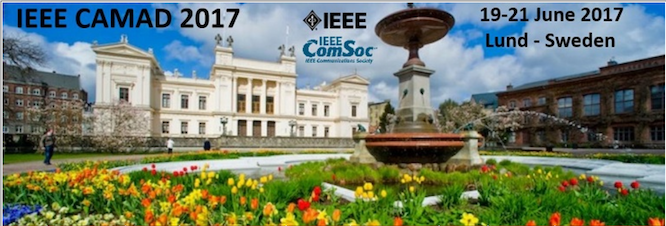
Text Anders Borgström
-We are pleased being able to gather such a wide range of leading researchers in wireless networks and 5G technology for the CAMAD-workshop here in Lund, says EITs professor Björn Landfeldt. -This year's focus is very well in line with this regions traditional specialist skills.
General CAMAD chairmembers well known to EIT are except Björn Landfeldt, LTH also Björn Ekelund, Ericsson and Peter C. Karlsson, Sony. A tutorial will also be given by EIT-professor Fredrik Tufvesson on "Massive MIMO from theory to practice, lessons learned so far".
CAMAD is an acronym for "Computer-Aided Modeling Analysis and Design of Communication Links and Networks". Every year there is a new workshop and this year the baton is grabbed by LTH and EIT who will host the event. It will take place June 19-21, 2017 in E-huset, more particularly in E:A and sessions’ room E:3139.
Agenda items cover recent developments on tools and techniques for the performance evaluation of communications systems and this year the focus is on 5G networking and beyond. CAMAD is an IEEE Communications Society portfolio event and this 22nd one.
Scientists, engineers, manufacturers and service providers will meet and exchange experiences, new ideas and research results. Also keynotes speeches, panel sessions, tutorials and a demo session will take place.
Keynote talk titles are “Sharing and slicing next generation networks”, “Networking in the millimeter waves band” and “Smart networks” and other topics during the event cover areas like Millimiter Waves Wireless Networks, Infrastructure as a Service, Source Cloud Platforms, Virtual Network Functions Placement and much more.
More info on the event with detailed program can be found here.
Battle of Bara bräcker Barsebäck
Publicerad: 2017-06-07

Text: Anders Borgström/Anders Karlsson, Bild: Richard Lundin
Institutionsmästerskapet i golf har gått av stapeln för tionde året i rad och Torleif Martin gick segrande ur striden för 2017. Tidigare års vinnare är:
2008 Bengt Mandersson(Spelades på Lunds Akademiska GK)
2009 Ulf Körner(Spelades på Kävlinge GK)
2010 Bengt Mandersson(Spelades på Romeleåsens GK)
2011 Ulf Körner(Spelades på Sjöbo GK)
2012 Richard Lundin(Spelades på Landskrona GK)
2013 Anders Karlsson(Spelades på Lunds Akademiska GK)
2014 Bengt Mandersson(Spelades på Sjöbo GK)
2015 Anders Karlsson(Spelades på Örestad GK)
2016 Anders Karlsson(Spelades på Landskrona GK)
Kampen (se fler bilder nedan) utspelades i Bara och silvermedaljören Anders Karlsson rapporterar följande:
Kära golfälskare,
Årets institutionsmästerskap i golf spelades på den krävande Linksbanan vid den exklusiva golfanläggningen PGA National of Sweden i Bara. Innan tävlingen åt deltagare och publik en god lunch i klubbhuset.

I år hade vi en utLundsk spelare i startfältet! Det var vår adjungerade professor Torleif Martin, som inte bara deltog utan också segrade efter lysande spel. Torleif är från Linköping och spelar en typ av nujäklaranamannagolf, som visade sig mer effektiv än den elegiska form av golf vi från Lundatrakten utövar. Stort grattis Torleif!
Vädret var perfekt och startfältet starkt, så vi hade räknat med en stor publik. Tyvärr valde många bort vår fina tävling till förmån för den mer pengastinna Nordea Master i Barsebäck. Det gjorde att det förväntade publikhavet reducerades till en person, nämligen Richard Lundin. Richard var dock inte bara publik! Ånej, han var också domare, caddy, protokollförare, prisutdelare, diplomtillverkare, bolletare och fotograf. Stort tack Richard för denna simultanekvilibristiska insats.

Här är så de fyra stolta medaljörerna:
Guld: Torleif Martin (stabilt spel hela dagen)
Stora silver: Anders Karlsson (spelade som en gud första nio och som en kratta andra nio)
Lilla silver: Bengt Mandersson (satte en 30 meters chip rätt i koppen och sänkte dessutom en 9-metersputt!)
Brons: Ulf Körner (sänkte en 10-metersputt!)
Nästa år arrangeras tävlingen av Torleif. Tävlingen är som vanligt öppen för alla som är knutna till institutionen.
EIT researchers awarded "best paper" at Test Symposium in Amsterdam
Publicerad: 2017-06-07
At the 21:st IEEE European Test Symposium (ETS) held in Amsterdam, The Netherlands, in May 2016, the paper: A Self-Reconfiguring IEEE 1687 Network for Fault Monitoring by Farrokh Ghani Zadegan, Dimitar Nikolov and Erik Larsson was awarded as the best paper.
The ETS is Europe’s premier forum dedicated to presenting and discussing scientific results, emerging ideas, applications, hot topics, and new trends in the area of electronic-based circuits and system testing and reliability. The acceptance rate of technical paper at ETS’16 was 21%.The best paper award was given at the 22nd ETS, held in Limassol, Cyprus.
Congratulations from EIT!
Read more at: http://www.ieee-ets.org
COST-meetings hosted by EIT in E-Huset
Publicerad: 2017-06-01
Text and Photo: Anders Borgström
LTH and EIT organized the IRACON “Inclusive Radio Communication Networks for 5G and beyond” meetings and workshops by the COST Action CA15104 during May 29-31, 2017. Around 100 attendees gathered at E-Huset, LTH for follow up on actions, deliverables, finances, dissemination as well as listening to keynotes and presentations and not the least to discuss, socialize, eat and drink with colleagues and friends.
The meetings involved academia and industry from all over Europe, with the support of some non-COST institutions and R&D associations and standardisation bodies worldwide.
Main organizers were Fredrik Tufvesson and Buon Kiong Lau (Vince).
KEYNOTE SPEAKERS were Dr. Leif Wilhelmsson, Ericsson Research, Lund, Sweden talking about “Key IEEE 802.11 components: High Efficiency Wi-Fi and Wake-Up Radios” and Dr. Peter Karlsson, Sony Mobile, Lund, Sweden talking about “Next levels of low power and long range cellular IoT”.
The meeting dealt with radio communications and connected devices like mobile phones, machines, sensors, vehicles and more. Wireless connection to the internet increases dramatically in numbers and the IRACON-concept defines technologies aimed to support wireless connectivity at any rates, for any communicating units, and in any type of scenarios. Radio access, wireless networks and systems are all subject to incredible research and development and this meeting is in the center of it all.
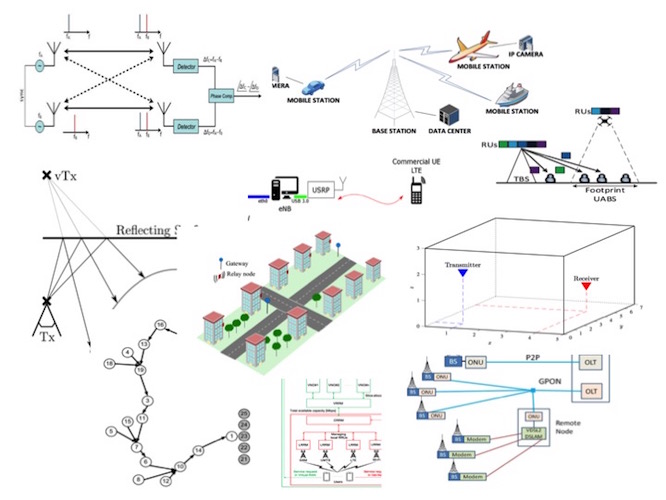
Fundamental theories, applied research and novel design for 5G (and beyond) radio networks were in focus and there is no lack of challenges. The wireless world include modelling of radio channels, capacity, energy, mobility, latency, scalability, network automation, moving nodes, cloud and virtualisation architectures. Also experimental research addressing Over-the-Air testing, Internet of Things, localization, tracking and new radio access technologies are included.
Demo on EIT 5G-mobile (not portable) device by Steffen Malkowsky and M-MIMO team
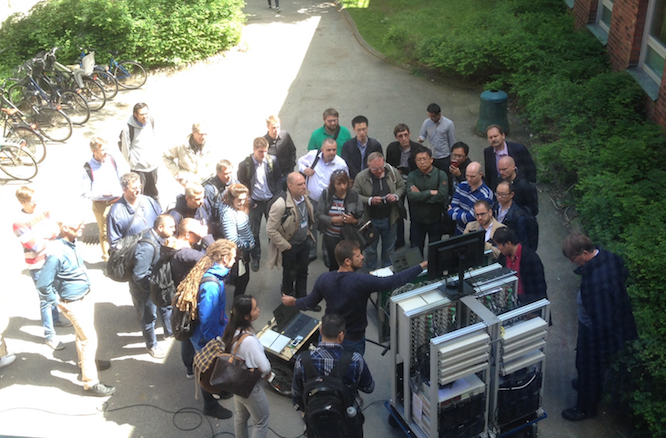
Since the COST-event was a working meeting (workshop) also deliverables and actions were followed up and also a tutorial+demo on the EIT Massive MIMO testbed took place. Tutorial speakers were Fredrik Tufvesson and Ove Edfors, Lund University, Sweden talking about “Tutorial, Massive MIMO: from theory to practice”.
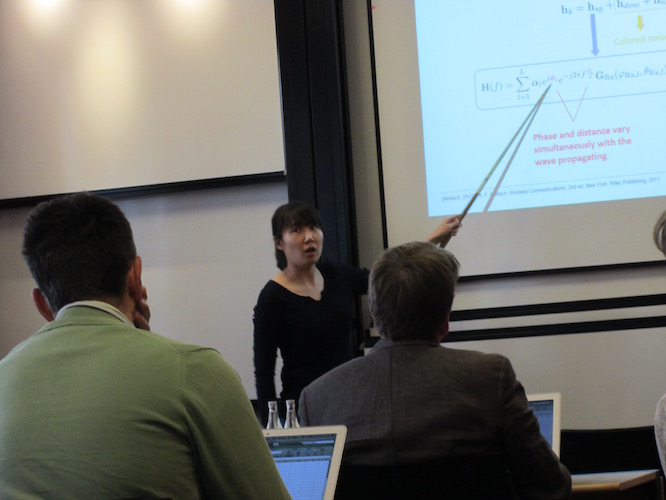
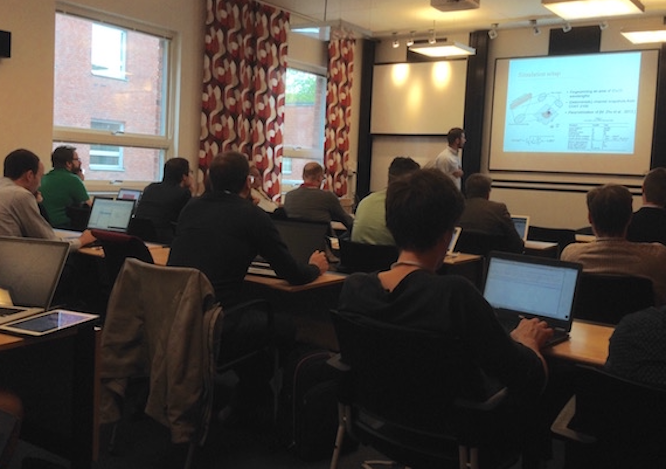
Mjukvaruutveckling på Peggys tårtseminarium
Publicerad: 2017-05-12
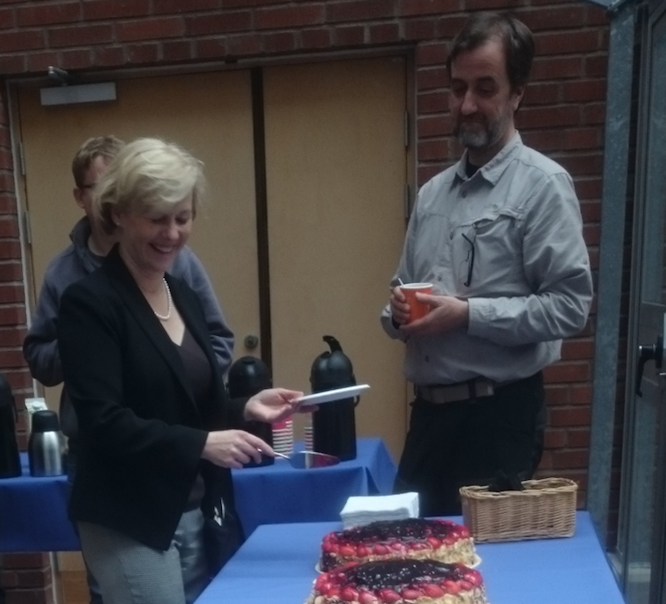
Text: Anders Borgström. Bild: Anders Borgström and Per Runesson
Torsdagens tårtsemnarium handlade om mjukvarutvecklarnas betydelse för framtidens kunskapsfabrik eller akademin, om man så vill. Föreläsare var Professor Margaret-Anne Storey eller Peggy som många kallar henne och hon är Lise Meitner gästprofessor på EITs systerinstitution Datavetenskap. Peggy kommer från University of Victoria i Kanada och under seminariet förmedlades intressant information om deras forskning kring utvecklares samarbeten i stora komplexa mjukvaruprojekt.
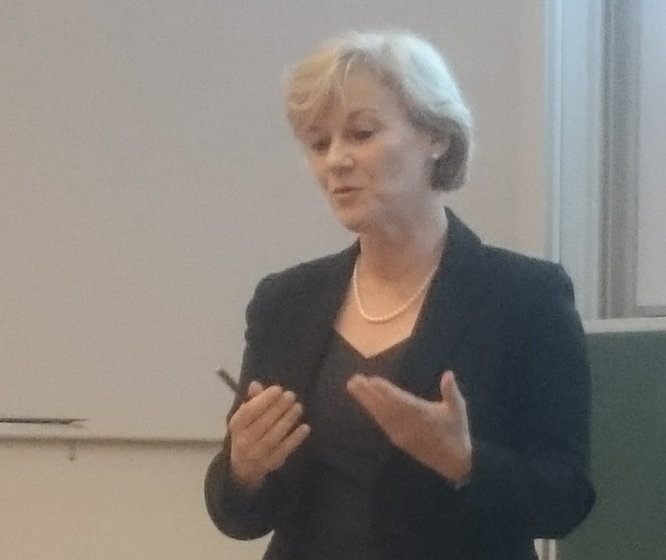
Mjukvarans betydelse ökar hela tiden och kan t.ex. uttryckas som att "mjukvaran skakar liv i hårdvaran". Verktyg för både utveckling, test och inte minst kommunikation mellan personer blir kontinuerligt allt viktigare och idag räcker det inte med kompilatorer och testverktyg utan även s.k. "social tools" är nödvändiga för att lyckas med sina stora projekt.
Som exempel nämnde Peggy att en enkel social tjänst som Twitter är ett verktyg som används flitigt av stora mjukvarugrupper för att hålla sig uppdaterade om det senaste i branschen. Samtidigt ser nya programspråk och nya verktyg kontinuerligt dagens ljus. Andra sociala verktyg som "Stack Overflow", en avancerad användarbaserad Q&A-community, har blivit extremt viktiga för utvecklarna och många menar att dagens komplexa mjukvaruutveckling fungerar inte utan dessa. Ljuset släcks på kontoret helt enkelt.
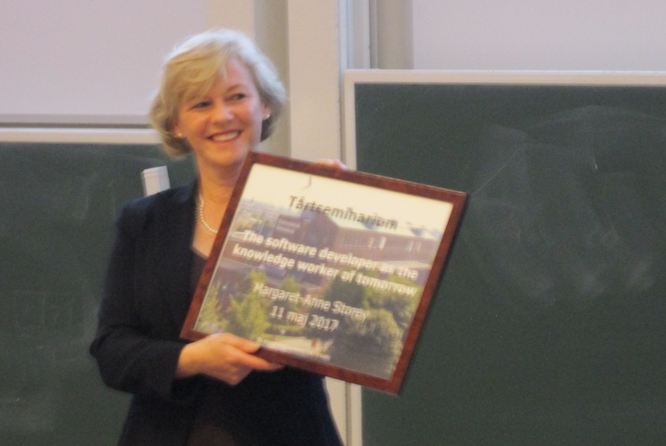
Professor Storey resonerade också runt intressanta överblicksbilder om hur människor kommunicerar i såväl den fysiska analoga världen som i den digitala och inte minst med hjälp av sociala medier. Allt från samtal ansikte mot ansikte, böcker, email, LinkedIn, Basecamp, GitHub, Stack Overflow, Skype, Google Hangouts och mycket mer sattes i ett snyggt sammanhang. I grunden är vi ganska enkla i vår mänskliga kommunikation men sätten och verktygen är många. Ett intressant citat som fastnade var "The best way to get the right answer on the internet is not to ask a question but to post the wrong answer".
Internets mekanismer är outgrundliga.
EIT do prestigious math conferences
Publicerad: 2017-05-03
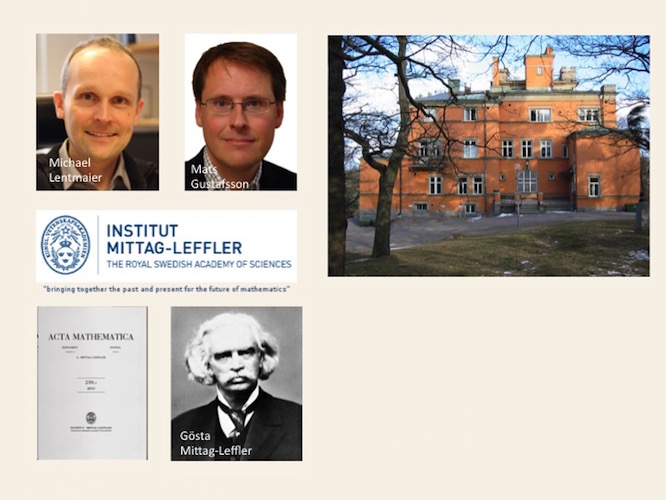
Text and layout: Anders Borgström
EIT is taking part in organizing upcoming Mittag-Leffler conferences and Associate Professor Michael Lentmaier says: -We are happy that EIT is involved in the organization of not only one but two workshops at Mittag-Leffler this year.
It's truly international and high-level conferences with top-level mathematicians and participants arriving from many research institutes and universities world-wide. Countries represented are US, France, China, Switzerland, Israel, UK, Canada, Iceland, Sweden, Norway and Finland. And a few more not to be forgotten.
Herglotz-Nevanlinna functions
The first conference where Professor Mats Gustafsson is co-organizer, runs May 8 to May 12 and is titled "Herglotz-Nevanlinna functions and their applications" and will bring together mathematicians, physicists, and engineers who are interested in bounded analytic interpolation. The focus lies on Herglotz-Nevanlinna functions in connection with passive, causal, and active systems (in particular, electromagnetic design, composite materials, and Dirichlet-to-Neumann maps) and hence the main tools are within complex analysis and functional analysis as well as convex optimization.
Information and coding theory
The second conference where Michael Lentmaier is co-organizer is running May 15 - May 19 and is titled "Information theory and coding theory with applications to data security and privacy". It will focus on how to apply information and coding theory towards providing security and privacy in systems. Researchers and practitioners in information and coding theory and in network security and privacy will gather, with the goals of identifying open security and privacy problems that arise in networks and distributed storage systems and that can be effectively solved by proper coding techniques.
Information theory and coding theory have been instrumental in shaping our modern digital world. Traditionally, information theory describes fundamental limits on the essential performance parameters of communication and storage systems, as they relate to the physical characteristics of the system. Coding theory however, is concerned with mathematical methods for designing practical systems that approach these fundamental performance limits.
Math and applications
The program consists of subjects both deeply mathematical and more applied ones with topics like "Physical-layer security and 5G", "Secure distributed storage", "Arbitrary Linear Code", "Coding and cryptography", "Latency and security", "Network Information Theory and Combinatorics". And the list goes on.
Facts on Institut Mittag-Leffler:
Institut Mittag-Leffler is an international centre for research and postdoctoral training in mathematical sciences. It was founded in 1916 by Professor Gösta Mittag-Leffler and his wife Signe, who donated their magnificent villa, with its first-class library, for the purpose of creating the Institute that bears their name.
Nice conference environments
The premises of Institut Mittag-Leffler encompasses several buildings on a park-like estate and the main building, originally the home of Gösta and Signe, is a beautifully preserved villa in the art nouveau style.
Focus on Nordic math research
The mission of Institut Mittag-Leffler is to support international top-level research in mathematics, with special attention to the development of mathematical research in Nordic countries. It also has a responsibility to serve as a contact and link between the international research community.
Activities and publications
Major activities of the Institute include research programs, conferences, workshops and summer schools. The Institute is responsible for publishing two research journals, Acta Mathematica and Arkiv för Matematik where the first one is one of the most prestigious mathematics research journals in the world.
LTH, EIT och 5G hörs i Sveriges Radio.
Publicerad: 2017-04-26
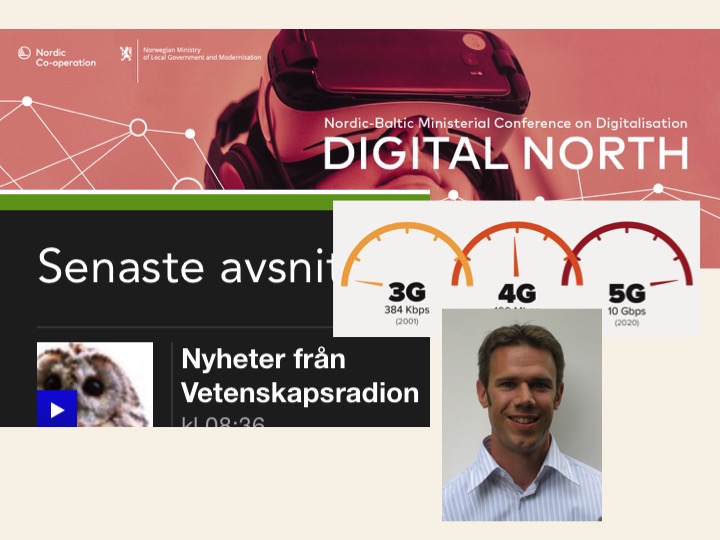
Text och bild: Anders Borgström
I nyheterna från Sveriges Radios "Vetenskapsradion", tisdagen 25 April berättar Fredrik Tufvesson att standardiseringsarbetet för 5G pågår för fullt och 2020 ska branschen veta mer vad 5G är och hur det ska fungera. En konferens i Oslo, Digital North, genomfördes den 25 April för att diskutera bl.a. dessa saker.
-Satsningen på en Nordisk-Baltisk gemensam handlingsplan för 5G-utbyggnaden är bra, menar Fredrik. -Sverige är ett litet land och vi behöver jobba tillsammans med andra länder för att få hela systemet på plats och dagens 4G-system måste integreras och smidigt evolvera in i den nya 5G-världen.
Även bostads- och digitaliseringsminister Peter Eriksson uttalar sig om hur länderna ska ta täten i Europa när det gäller 5G-utbyggnaden. Under Digital North-konferensen diskuterades om hur digitalisering ska öka samarbetet mellan länderna och hur utbyggnaden av 5G ska kickas igång.
-Det finns en stor fördel om vi kan samarbeta och samordna när det gäller frekvenser, system och teknik eftersom vi alla är ganska små länder, säger Peter Eriksson. Vi växer i styrka internationellt sett helt enkelt.
5G är det kommande mobila bredbandet med högre hastigheter och bättre kapacitet. Fler kommer att kunna surfa samtidigt på samma plats och utan fördröjning. År 2020 är året för kommersiellt introduktion och därför är en gemensam teknisk standard viktig.
Under Digital North-konferensen möts representanter på högsta nivå från både regeringar, näringsliv och akademi för att diskutera och katalysera kommande samarbeten inom området. Mer om konferensen med bl.a. streamad video här.
Prestigefyllt SSF-anslag till EITs nanoelektronikforskare.
Publicerad: 2017-04-11
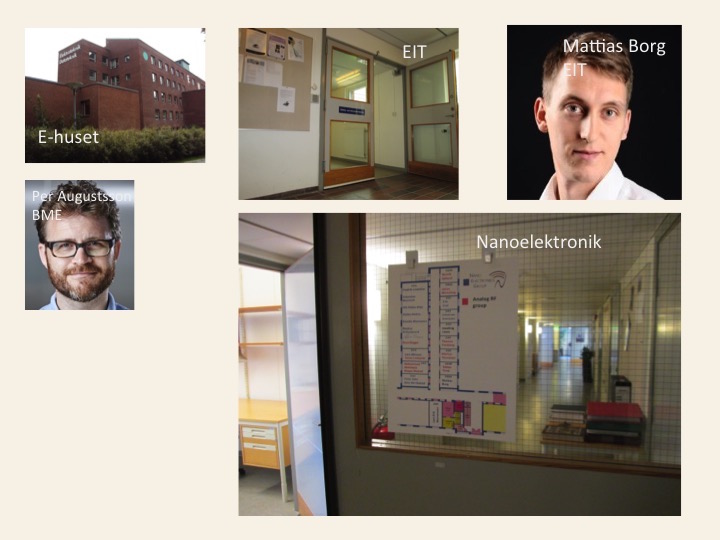
Text + Bild: Anders Borgström
På frågan om detta var överraskande eller väntat svarar Mattias:
-Jag jobbade väldigt hårt på denna ansökan och hoppades verkligen jag skulle få priset. Det ger ju en fantastisk möjlighet för mig som ung forskare att utvecklas som ledare och få resurser till min forskning.
Forskningspengar, fickpengar och ledarskapsprogram
Mattias Borg som forskar inom materialvetenskap och nanoelektronik är en av tolv unga, lovande postdoktorer som får dela på 48 miljoner kronor från Stiftelsen för strategisk forskning, SSF. Var och en får 4 miljoner kronor och ett personligt stipendium om 60 000 kr. Dessutom ingår ett ledarskapsprogram för bidragsmottagarna.
Mer pengar till E-huset
Ytterligare en forskare, Per Augustsson från EITs granninstitution BME, får samma anslag beviljat. Grattis alltså till både nanoelektronikgruppen, EIT och E-huset. Och till Mattias framförallt. Mattias har disputerat vid Fasta tillståndets fysik i Lund och har sedan gjort sin postdoc hos IBM Zürich Research där han också var anställd i forskarstaben.
Stöd för nyskapande forskning
“Det blir spännande att följa dessa unga, lovande forskare som alla nyligen har gjort sin postdoc i utlandet och nu får förutsättningar att etablera sig i Sverige. Rörlighet bland forskare är en strategisk faktor,” säger Lars Hultman, vd för SSF i ett pressmeddelande.
Pengarna kommer från “ICA” eller Ingvar Carlsson Award och har fått sitt namn av SSFs tidigare ordförande, dåvarande statsministern Ingvar Carlsson. Huvudsyftet med programmet är att stödja yngre hemvändande postdoktorer med ambition att starta en självständig och nyskapande forskningsverksamhet i Sverige.
Snabbar upp elektronerna
Mattias bidrag handlar om nya tekniker för snabbare halvledare och är renodlat tekniskt med nya halvledare för snabbare elektrontransport. Forskningen syftar till att oxidera metaller på kisel och därigenom få spontant självorganiserade strukturer med goda egenskaper för framtidens komponenter.
III-V nanoelektronik integreras på kisel
Under sitt doktorsarbete utvecklade Mattias epitaxiell växt av antimonid-nanotrådar och heterostrukturer för nanoelektroniska tillämpningar och i postdocarbetet hos IBM uppfann han en nyskapande integrationsmethod for III-V halvledare som kallades "Template-Assisted Selective Epitaxy" (TASE). En metod som möjliggör att högpresterande III-V nanoelektroniska komponenter kan integreras med standard kisel CMOS-processer på ett direkt och kostnadseffektivt sätt.
Mot docent och leta doktorand
Vad händer närmast i forskarkarriären, undrar vi?
-Min närmsta mål blir nu att ta min docentur samt försöka att anställa en doktorand för att jobba på det här projektet, säger Mattias och återgår till sin avkopplande påsksemester.
Grattis till Mattias!
LTH-studenten Rajeshwari Yogi, Wireless Communications, har blivit nominerad till Global Swede 2017.
Publicerad: 2017-04-10
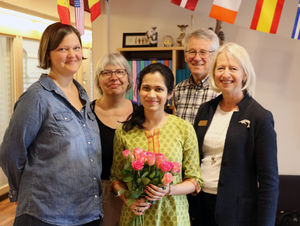
Global Swede är en utmärkelse som delas ut av Svenska institutet i samarbete med näringsdepartementet och utrikesdepartementet till en utländsk student som studerat entreprenörskap eller innovation i Sverige. Syftet med utmärkelsen är att uppmuntra studenterna till att vara goda ambassadörer för högre utbildning i Sverige.
Rajeshwari Yogi från Indien studerar masterprogrammet Wireless Communications på LTH och är enligt motiveringen en synnerligen engagerad och begåvad student som också är studentambassadör, tar emot nya studenter, är SI-ledare och bloggar dessutom om studentlivet på i Lund och på LTH-
En digital lekstuga för stora barn...
Publicerad: 2017-04-10

Bild: Ingemar D Kristiansen
...var Sydsvenskans rubrik på artikeln om IoT-basstationerna som nu monterats i Lund. Det hela är början till ett experimellt trådlöst datanätverk i Lund för att sensorer och andra IoT-anslutna prylar ska kunna leverera data.
Mer finns att läsa på SDS om du har premieinnehåll eller på bilagda kopia på papperstidningen.
Farookhs research saves time for chipmakers
Publicerad: 2017-03-30
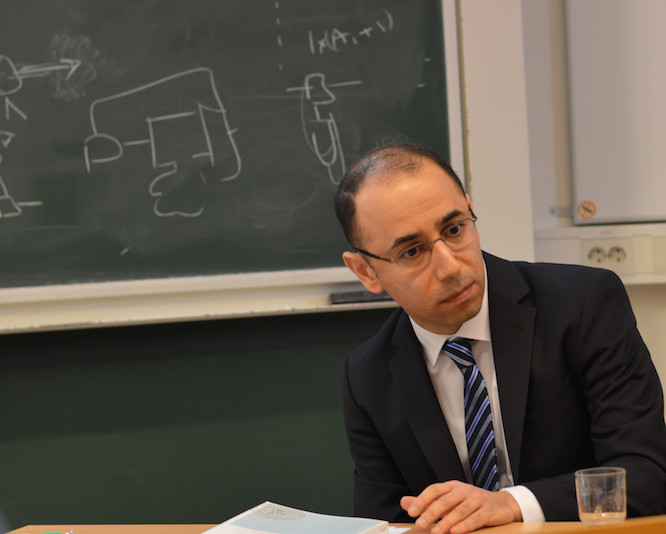
Text: Anders Borgström, Bild: Farrokh Ghani Zadegan
-Jag pratar lite svenska faktiskt, says Farrokh when asked if Swedish or English is preferred for this chat. Continuing in Swedish, he fills in: -Lite jobbigt dock att prata med skåningar, det gick bättre under min tid i Linköping. Skånska låter som ett annat språk faktiskt. :-)
So back to English then.
Farrokh Ghani Zadegans date of disputation was March 17, 2017 and the long title of the thesis " Reconfigurable on-chip instrument access networks: analysis, design, operation, and application" indicates it has something to do with integrated circuits. And yes.
CAD is the keyword.
A first somewhat general and fumbling question is if Farrokh has worked mainly with hardware or software. -It's mainly CAD (Computer Aided Design) for electronics, is Farrokhs short answer. But that needs some further explanation.
When prototyping complex ICs embedded circuitry is needed for measurement, debug, test and monitoring. This is provided through so called on-chip instruments and access time to this instruments from outside must be low.
In Farrokhs research, CAD-tool development has been supported and so also automatic generation and reconfiguration of networks. A specification is given to the tool telling a number of on-board instruments that would be accesssed and also if certain instruments are more frequent than others. A circuit network is then generated in a way that the overall accesstime is reduced.
-Algorithms are developed to generate hardware circuitry so thats why it's CAD, Farrokh continues. -You have a configurable network and you want to find the best way to reconfigure this network so that the accesstime to a particular network is reduced. I support the algorithms to search for the best way to do it in a reasonable amount of time. CAD captures it all. -CAD is the keyword, he conludes.
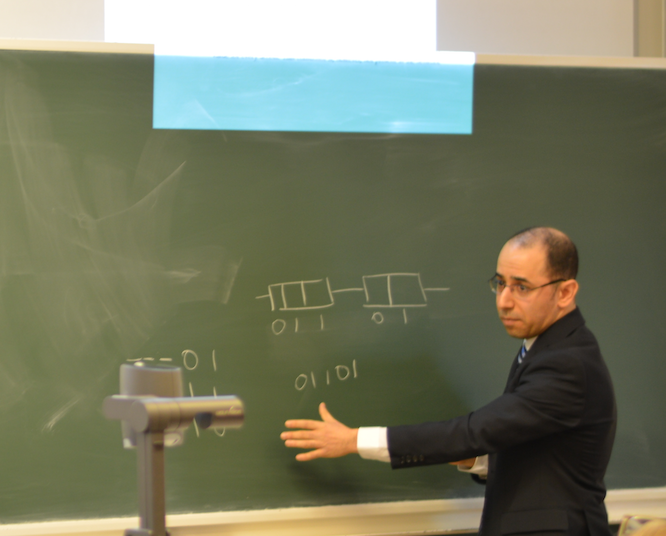
A time saving work
In explaining where time is saved Farrokh describes that accesstime for instruments and runtime for algorithms are different things. -Runtime for algorithms lead us to the limited accesstimes, he says. I have proposed algorithms for design and operation of networks so accesstime is reduced. Considering all possibilities will take forever and my algorithms try to limit the scope such that the search for the minimum accesstimes takes a reasonable amount of time with minimal runtime.
Money saving for chip-makers
An analysis phase is mandatory before you can do any design and operation with help from CAD and directive goes to the CAD tools generating a chiplayout. After that follows a post layout simulation. Reduction of accesstime is truly beneficial for manufacturers of chips since their processes are far from perfect. -Huge money and time are spent on testing and shorter accesstimes will reduce cost significantly, says Farrokh.
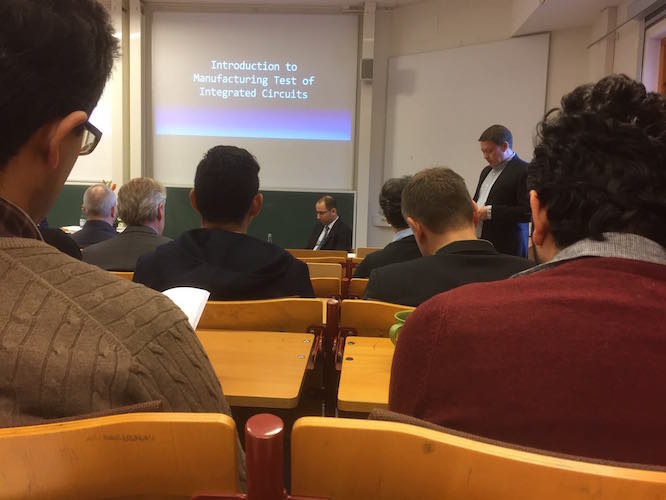
Paved the way for a research career.
-My thesis topic should have practical and industrial relevance, that was my expectation before starting, says Farrokh. I worked mainly with industrial standard IEEE Std 1687 and companies like Mentor, AMD, Cisco and Qualcomm have pushed for this.
We've made good impact and have contributed greatly to the standard, for sure. I have built a good network with the people involved and Mentor is benefitting in providing tools to the chipmakers. -My PhD graduation should pave the way for a research career to follow. -That's my sincere hope, Farrokh says.
-And now it's time to take the next step, return the EIT roomkey and accelerate my job-seeking.
Piano virtuous coming up
Any interests in leisure time? -I play Tar, a six-string iranian instrument. -I'm also trying to master a piano with help from Youtube tutorials on Bach and Beethoven, says Farrokh and shows a recording of himself performing "Für Elise" in the most nice way. Asking for a link to publish the masterpiece in this article the answer is negative. -I'm not there yet, he laughs.
Congratulations from EIT and good luck in the future!
EIT syns på NMT-dagarna!
Publicerad: 2017-03-10
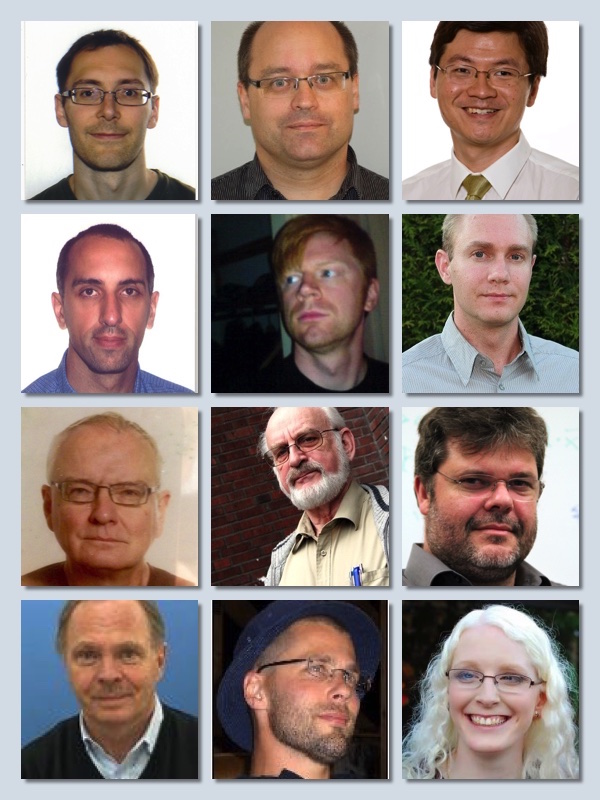
EITs NMT team uppifrån fr.v: Paul Stankovski, Daniel Sjöberg, Buon Kiong Lau (Vincent), Joachim Rodrigues, Erik Lind, Martin Hell, Richard Lundin, Lars Olsson, Björn Landfeldt, Ulf Körner, Johan Wernehag och Emma Fitzgerald.
Text: Anders Borgström
Nästa vecka, den 13-17 mars, kommer det krylla lite extra av demografins yngre segment i våra korridorer. Våra forskare tar chansen att på NMT-dagarna locka gymnasieelever med spännande föreläsningar inom olika vetenskapliga områden. Med förhoppningen att fler ska söka sig till LTH och EIT efter avslutat gymnasium.
EIT ställer upp med inte mindre än 12 föreläsare som tillsammans med ca 120 andra från olika institutioner kommer ge eleverna aptitretare runt naturvetenskap, medicin och teknik. Därav namnet NMT.
NMT-dagarna är ett årligt event sedan 1998 och ca 300 populärvetenskapliga föreläsningar kommer att hållas som handlar om allt från mörk materia, stamceller och kärlekens kemi till om internet egentligen finns.
Från EITs sida kommer det pratas om antenner, köer, lösenord, wifi, elementarpartiklar, stötgeneratorer, kroppselektronik, satellitkommunikation, medicinsk elektronik och mycket annat. Våra föreläsare och ambassadörer är Lars Olsson, Joachim Rodrigues, Johan Wernehag, Erik Lind, Daniel Sjöberg, Martin Hell, Emma Fitzgerald, Richard Lundin, Björn Landfeldt, Paul Stankovski och Buon Kiong Lau (Vincent).
NMT dagarna besöks varje år av runt 6000 gymnasieelever och lärare.
Forskningsmiljöbidrag från Vetenskapsrådet till EIT.
Publicerad: 2017-02-27
Anslag från Vetenskapsrådet på 4 MSEK/år tilldelas professor Lars-Erik Wernerssons grupp.
Stort grattis!
Forskningsområdet kan sammanfattas som nedan:
Låg strömförbrukning kräver låg drivspänning vilket i sin tur ger sämre prestanda och nya transistorer behövs därför som använder helt andra fysikaliska processer än de traditionella. Två transistorkoncept, tunnel-transistor och ferro-transistor kommer att studeras där förbättringspotentialen ligger i finjustering av kombinationer av materialen gallium-arsenid-antimonid och indium-arsenid.
Ferro-transistorer kan ha ett inbyggt elektriskt fält i sig där ett extra spänningstillskott kan få en transistor att känna av en högre drivspänning än vad som faktiskt används. Sänkt drivspänning med bibehållen prestanda kan då bli följden.
Forskarteamet i Lund vill också studera hafnium-dioxids ferroelektriska egenskaper, samt att tillverka och utvärdera ferro-transistorer baserade på detta material. Forskarna kommer att utnyttja den nya anläggningen MAX IV i Lund för att få inblick i dessa materials innersta struktur.
Sammantaget så kommer detta projekt att lägga en grogrund för en ny generation av strömsnål kretsteknik i Sverige och världen. Med tillämpningar inom bärbar kommunikation och Internet of Things som mål siktar forskarteamet högt, men har trots det ambitionen att krets- och transistorresultat ska vara underbyggda med djup insikt i den grundläggande materialvetenskapen som ligger bakom.
EIT-doktorand bakom ARMs senaste uppköp
Publicerad: 2017-02-21

Text och bild: Anders Borgström
Brittiska ARM betalar mer än 100 miljoner kronor för Lundabolaget Mistbase och satsar på en utvecklingsavdelning för IoT (Intenet of Things) i Lund. Det rapporterar flera nyhetsmedia idag bl.a. Rapidus , Dagens Industri och Sydsvenskan .
ARM tar över Mistbases teknik och personal med runt 15 anställda idag, ett antal som nu kommer att växa. Mistbases teknik gör det möjligt för uppkopplade enheter att kommunicera med hjälp av nedskalad och billigare hårdvara som kräver små mängder datatrafik för sin kommunikation.
Bolaget grundades 2015 av LTH-doktoranden Michal Stala samt Magnus Midholt och de båda porträtterades på vår hemsida i September 2015.
Grattis till Michal och övriga i Mistbase!
Säkrare saker i Martins projekt
Publicerad: 2017-02-15

Bild: Ny Teknik
Det VINNOVA-finansierade forskningsprojektet Seconds som ska ge ett säkrare internet-of-things drivs av EITs Martin Hell och det uppmärksammas i det senaste numret av Ny Teknik (nät + papper). Läs artikel
INSIGHT incoming call! New video release!
Publicerad: 2017-02-15
Text: Anders Borgström. Picture: Insight Consortium
The INSIGHT consortium has released a nice video telling about their project and goals in a popular and narrative way.
The consortium research is about integration of III-V nanowire semiconductors on to silicon platforms. The consortium consists of 6 very experienced international partners with Professor Lars-Erik Wernersson as project coordinator and Dr Mattias Borg as operational manager. Both are from EITs nanoelectronics group in Lund. Except for Sweden, partners contribute from Germany, UK, France, Switzerland and Ireland.
In the video we learn about how the last 45 years dramatic increase in capacity of storage, communication and computation also has resulted in dramatic rises in power consumption.
A single transistor consumes very little but in the total global perspective, it becomes extremely significant. High mobility of the free charge carriers in the III-V materials contribute together with lower voltages to much less switching power losses per transistor which is a major target of the project.
The video also depicts how the III-V technology can be introduced in different applications e.g. radars for self-driving cars, 3D-imaging for mobile phones and airport security systems.
Martin Hell berättar om darknet och anonymitet på nätet i SR
Publicerad: 2017-02-13
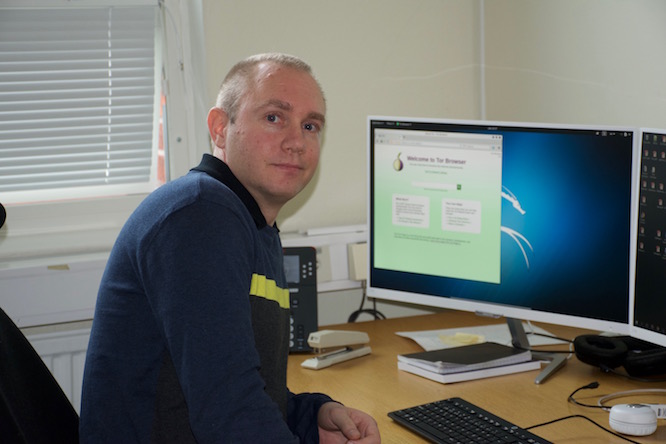
Text och bild: Anders Borgström
I Sveriges Radios Vetandets värld den 6 Feb kunde vi höra om darknet eller internets mörka bakgata som man beskriver det. EITs krypterings- och datasäkerhetsexpert, Martin Hell, berättar för svenska folket om tekniken bakom det hela.
På darknet kan man köpa droger, vapen, barnpornografi, utrotningshotade djur men även i anonyma forum crowdfunda t.ex. beställningsmord och annat som ligger långt utanför lagens gränser. Man kan göra det i skydd av nästintill total anonymitet och varken du som besökare eller den besökta hemsidan kan bli spårad.
Internet har tre delar. Det öppna nätet, deepweb och darknet. Det öppna nätet som de flesta känner till består av hemsidor, musik, film, sociala medier m.m. men under ytan finns det s.k. deepweb med sidor som inte indexeras av sökmotorer och därför inte dyker upp när man söker via t.ex. Google. Ännu längre ner finns då darknet som bara nås med speciella programvaror och där man kan vara helt anonym. Förutom den kriminella delen finns det nyttiga saker med deepweb och darknet eftersom anonymiteten kan användas av journalister, forskare och regimkritiker för att kunna få ut sina budskap utan att riskera upptäckt och bestraffning.
Tekniken bakom darknet heter Tor (The onion root) och är sprunget ur militär forskning på 1990-talet. Säkerhetsutveckling byggs ofta av att många använder ett system så programmet släpptes fritt i början av 2000-talet och snart fanns de första sidorna på internet.
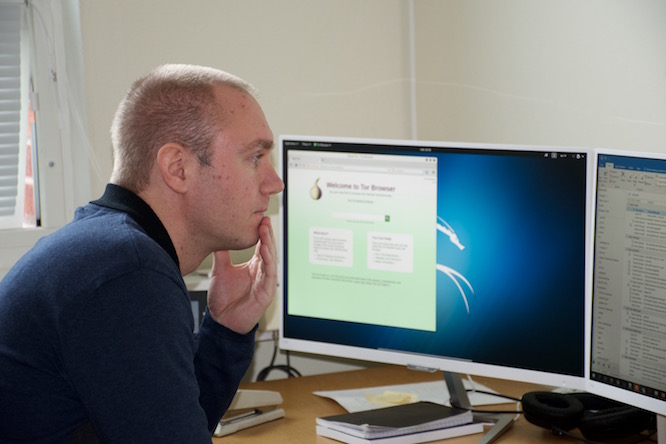
Martin Hell, berättar i inslaget bl.a. att det behövs speciella webbläsare för att komma åt informationen på darknet. Istället för webadresser som slutar med .com eller .se så är det alltid .onion som syns när en darknet-sida besöks. Anonymiteten kan som sagt också användas på ett legitimt sätt, bl.a. i yttandefrihetens tjänst och Martin beskriver hur tekniken fungerar. -Man kopplar upp sig till en webbplats genom att hoppa via ett antal andra datorer (noder) där den sista datorn i hoppkedjan är den enda som den besökta webbplatsen kan känna till.
Alla besökare och webbsidor på det mörka nätet måste vara anonyma. På darknet växer en kriminell verksamhet fram som också kan använda sig av den digitala valutan bitcoin, också den svår att spåra. I inslaget får vi även höra polisens spaningsledare berätta om hur darknet bevakas av dem för att succesivt säkerställa identitet på brottslingar och därmed nysta upp brottsfall. Trots anonymiteten kan små detaljer på darknet sammanfogas av polisen och ge dem en helhetsbild som bidrar till att lösa brottet.
Attack and defense is his focus areas
Publicerad: 2017-02-07
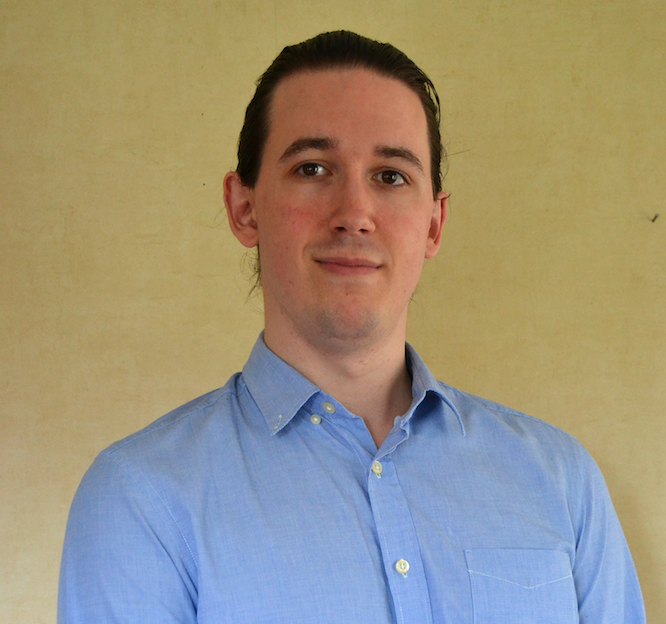
Christopher Jämthagen defended his thesis "On Offensive and Defensive Methods in Software Security" back in November 15 and reached his PhD-degree. A few questions to Christopher:
Can you describe your research in a popular science way?
-My research focused on attacks and defenses in software security. We tried to find flaws in protocols and systems and exploit them. We also looked at existing attacks and tried to think of new and better ways to defend against them.
What made you want to pursue a PhD and what is the most fascinating/interesting with your subject?
-Probably the chance to get into an adversarial mindset and try to break stuff was the most fun aspect of it. Getting personal with security issues and really do a deep-dive into interesting protocols to see where they may be flawed.
Who are you? Where do you come from? What are your interests?
-I am a 30 year old (three days after my defense), living in Dalby with my family. Outside of the IT sector I enjoy watching movies, bouldering and playing pretty much any racket sport there is.
Do you have any particular interesting or funny occasion during your PhD time you want to share?
-One fun assignment I received early on was when our group were asked to do forensics on a server another Swedish university had seized and the police weren't able to retrieve anything from it. Except for some meta-data we didn't manage to extract any information either since it was fully encrypted, but it was a lot of fun giving it a shot.
Vad har du för planer för framtiden/what are your plans for the future?
-My plans revolve around working on the cryptocurrency Bitcoin in some manner.
Congratulations to Christopher and good luck in the future from EIT.
Zach attacks mobile M-MIMO with TCM
Publicerad: 2017-01-16
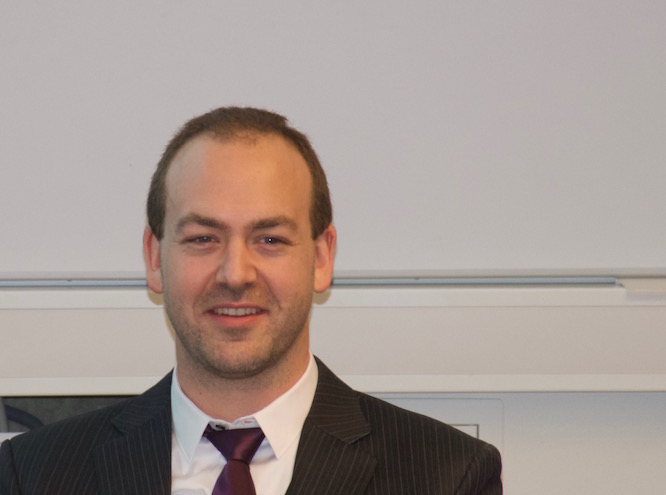
Text and Photos: Anders Borgström
In control
-It was wonderful! One of the best experiences that I had. Zachary Miers did his PhD graduation November 29 and he's not hesitating when asked about how it all felt. Well prepared with published papers and an almost error-free thesis in place he had control over the situation. Zachary, or Zach as he is called, smiles when admitting there was a diagram label that needed correction.
Good opponent
-The opponents questions were good, not easy but I felt I had answers to everything so there were no embarrassing long silent moments, says Zach. She had obviously read the thesis thoroughly and she did an excellent job in our discussion. Zach tells us further that the opponent is highly ranked in IEEE and has worked a lot in this field. -Never met her before though, he adds.
Party the swedish way
An excellent party took place after the disputation with ten (!) family members flown in from Colorado US and many others from his swedish friend community. -I have a great family and they got a good insight in how things are done over here! Zachs swedish friends supported him in setting up the party the swedish way with food, drinks, songs and other important stuff.
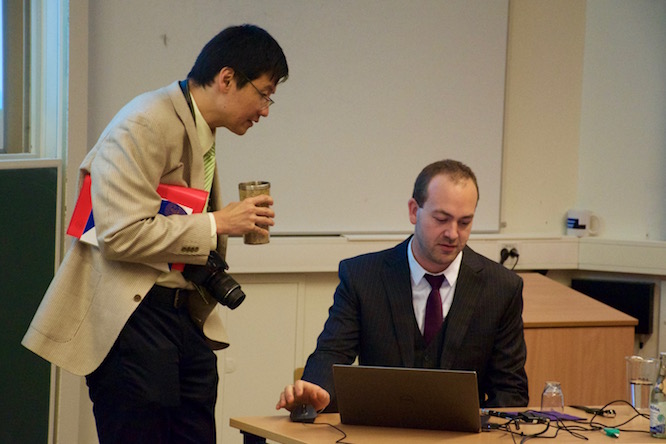
Last preparation with Vincent and Zach
TCM is like playing guitar
TCM, or Theory of Characteristic Modes, is what Zach has used in order to design antennas. Maxwells equations has a role but there are other things taking part.
-I'd like to describe it by an analogy of using a guitar string, doctor Miers says putting his pedagogic hat on his head. -Snapping a loose string will result in a tone that could be analyzed and if I change the boundary conditions by using a finger on the fretboard, there will be another tone. In electromagnetics, a piece of dielectric or metal can be used as an antenna and it delivers radiowaves when fed in special ways and by moving parts around.
TCM was published for the first time in 1965 and it woke up again around 2004-2005. It's been used a lot for cellphone antenna systems and it also allows you to create MIMO antennas. The first commercial software came out in 2015 and it has finally gained traction.
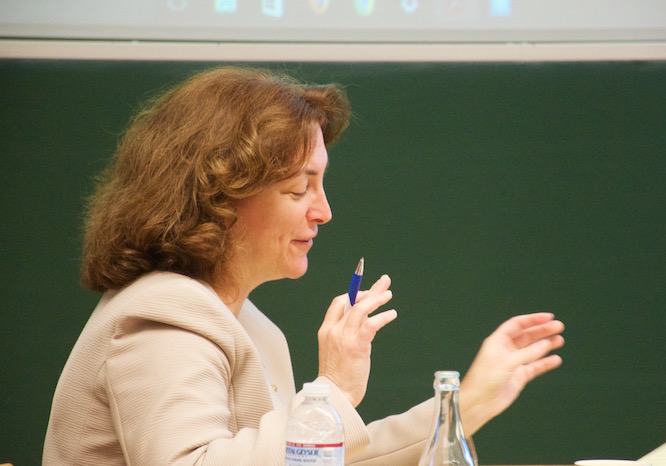
Opponent in discussion
Antennas for the real world
Antenna design evolution has been slow since the eighties, compared to most other technology parts within a handset. Zach came up with theories on how to allow inclusion of dielectrics, real materials, human hands and more. Previously it was mainly about perfect conditions which did not fully reflect the real world of antennas. -We also got some patents on special antenna designs, Zach continues.
-You can take a set of currents and see how that turns into radiated power and than use that pattern in order to solve how to outline the antenna, he says. The main target is to design cellphone antennas radiating within the range of a cellular system but it could also be used for other radio communication systems, satellite links, Hi-Q IoT-antennas and more.
From research to development
-I have a job coming up at Ball Aerospace, Broomfield, Colorado, within development of commercial 5G communication systems, Zach tells us. It's mostly about phased arrays for space qualified applications such as satellites and it will be a change, for sure! Ball Aerospace made satellites like Digital Globe and Quickbird which are the ones taking pictures for Google Earth. So we are all familiar with them, in a way.
Why Sweden and EIT?
Why Zach chose Sweden was really by chance. -I wanted to see new ways of doing things compared to my home university, says Zach. Looking around for a European Top-100 University ended up in Vincent (Prof Buon Kiong Lau) asking me to apply for an open position in Lund. I came here in September 2012 and I now love Sweden even though it took some time to find really good friends.
What I like here is that I can, by looking around, find new opportunities close by. My antenna design field can be used in other fields, e.g. M-MIMO or circuit design.
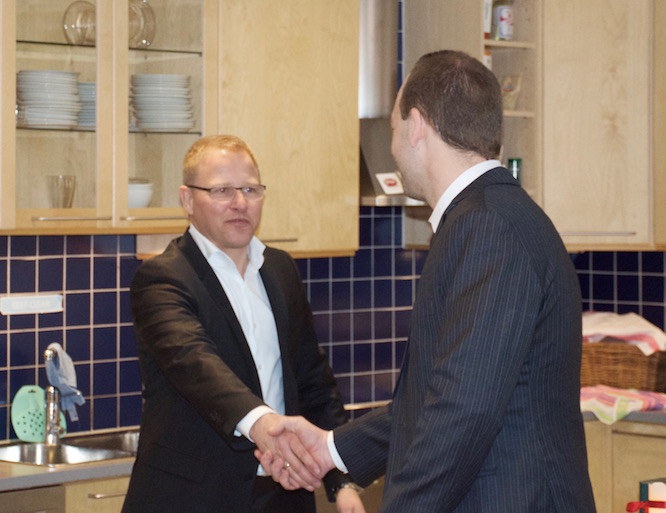
It's a YES!
Electric bike
There's been time also for non-theory things and a long range electric bike is the result of that. Spec: 1,5 hours charging time, large LiI-battery, wheel+motor from China, controller, high-efficiency and programmable. 40-50 km without pedaling. Zach smiles when asked if driving an electric bike without pedaling is legal.
Family life emerging
A child is on its way (27 weeks so far) and moving back to US is on the short term agenda. -It's quite a hard decision to move away from Sweden and our friends, says Zach. My wife also works as a special needs teacher in Malmö and loves it. -But family support and getting closer to home now also mean a lot for us. Finding a place to live, moving and a lot of other practical things will occupy my mind and body the coming days. My job starts Feb 27 so leaving Sweden is coming closer and I will now start logging in to Blocket in order to get rid of things before that.
Congratulations and good luck from EIT!
